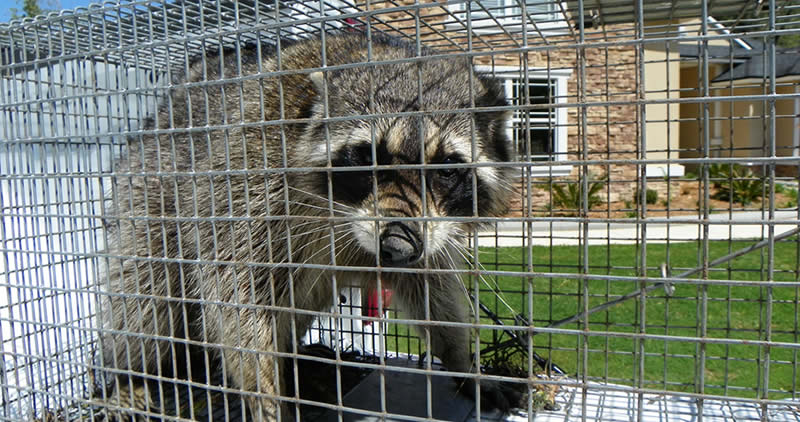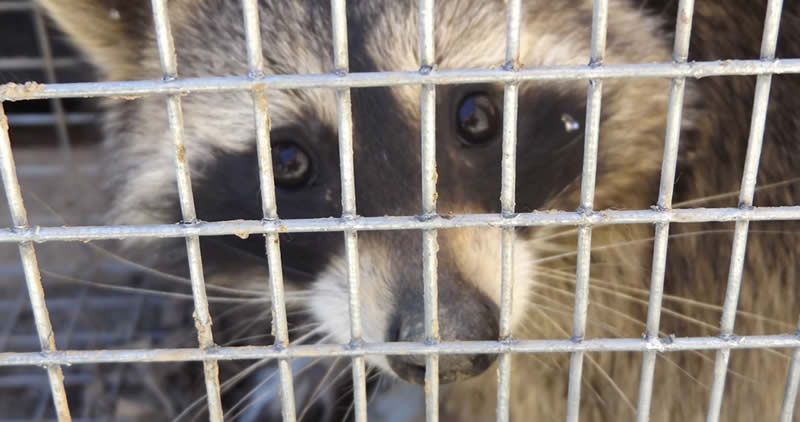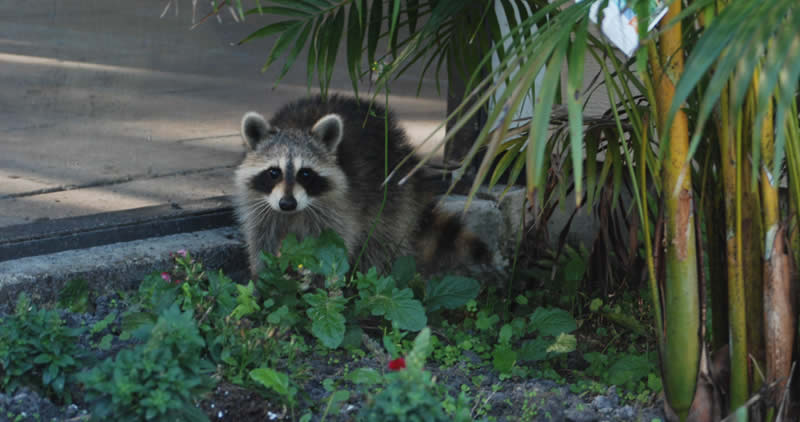Getting rid of Raccoons
About the Raccoon
Raccoons are a medium-sized mammal that is native to the United States. It can be found in most states and cities in the US. Raccoons have a body length that measures anywhere between 16 and 28 inches and can weigh anywhere between 10 and 32 pounds. The most distinctive markings on the raccoon is its masked face. Most of its body is gray in color. One of the most unique attributes is that a raccoon has the ability to use its hands and all five fingers just like a human. That means it can pick up objects, open latches, access cabinet drawers and open gates. This distinctive feature is not found in any other Mammal in the animal kingdom. This also makes controlling a raccoon sometimes very difficult.Getting rid of Raccoons
Raccoons are controlled in several ways including trapping, hunting, automobile collisions and other natural parasites. We focus on raccoon trapping for control. There are several types of traps used to capture raccoons. This includes live traps, suitcase style traps and snare traps. All of these traps are used by nuisance wildlife trappers to positively control a raccoon population in an area. Raccoons should never be allowed to nest or den in an area that is populated by humans. Many diseases are associated with raccoons and their presence. You can find more information and on the diseases that they carry in the section labeled wildlife diseases.Habitat of The Raccoon
Raccoons are found across most of the United States and their numbers grow considerably every year. With very few natural predators, raccoon populations are left relatively unchecked. In a natural setting, raccoons are found in large stands of trees bordering agricultural fields that include corn and vegetable stands with a water source close by. In a urban environment raccoons are found throughout most US cities and have been known to derive their food sources from dumpsters, trash cans, landfills, and other places of refuge. Raccoons have evolved into scavengers. Now their choice of dens is your attic, crawlspaces and other industrial facilities in which their presence is often unwanted.Raccoons and their Diet
A raccoon’s natural diet consists of mostly aquatic animals such as crayfish, fish, tadpoles, and frogs. In a more urban environment raccoons will pretty much eat anything available. Theie biggest food source in a city environment would be pet food. Unsuspecting homeowners leave out cat food, dog food and other types of waste that raccoons considers a feast.How are they a Nuisance?
Raccoons can become a nuisance in all types of environments. Especially if they have access to an easy food source on a daily basis. Raccoons become very accustomed to eating the same food at the same time at the same spot every day. Raccoons become a nuisance to human beings by making their nesting site close to their food source. This is simply a convenience for the raccoon as it feels the need to live very close to where he eats. The amount of energy it usues on a daily basis is limited. Raccoons find nesting areas in attics, crawlspaces and walls of homes. Once a raccoon becomes used to an area, it is very hard to persuade that animal to leave. Often times trapping is one of the only options to completely control a raccoon population.
What If I have a Raccoon problem? If you feel that you have a raccoon problem and would like professional assistance in getting rid of the raccoon, contact a wildlife removal professional located in our help section. Simply click your state, locate your city and call the number listed on that page. If there is no one listed in your area, please fill out our contact us form and we will find a professional wildlife removal company to assist you. If you would like to purchase DIY traps and baits, click here.



